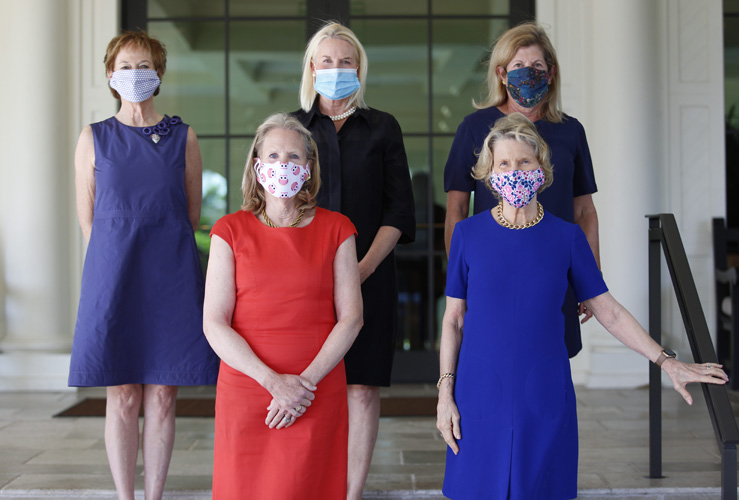
The John’s Island Community Service League presented a Virtual Opening Meeting to their membership last Monday, as their annual luncheon became another victim of the coronavirus pandemic.
Past presidents Hope Woodhouse and Pat Thompson led the presentation, reading remarks by current board president Betsy Fox, who was called out of town.
Encouraged that more than 200 people had responded to the meeting, matching last fall’s 40th anniversary opening luncheon, Fox had written, “It’s wonderful to know people are interested in what we are doing and want to stay connected. It makes all the work that we do worthwhile.”
Woodhouse relayed some of JICSL’s remarkable accomplishments, including providing more than $1 million in grants and scholarships in each of the past few years.
In June, the JICSL donated $250,000 to the United Way COVID-19 Fund, and successfully challenged other funders to contribute another $200,000. In July they created the HEART (Housing Emergency Advocacy Response Team) Program, providing $150,000 to fund a dedicated legal aid attorney at the Florida Rural Legal Services to assist residents faced with evictions and mortgage foreclosures.
Thompson introduced Woodhouse as this year’s speaker, citing her tireless work on behalf of the community.
Woodhouse shared her perspective on the state of the county, comparing January 2020, when the Community Needs Assessment was released, to where we are now, mid-pandemic. She highlighted five takeaways from the report, which was based on 2018 and 2019 data.
“The first was that seniors make up an inordinately large percent of the Indian River County population,” said Woodhouse, noting that low-income seniors have higher rates of alcoholism, smoking, obesity and depression.
“The second big takeaway is that we have significant income inequality in Indian River County,” said Woodhouse.
Ours is the 10th widest income gap in the United States. The average income of the top 1 percent is $2.9 million, but only $43,000 for the bottom 99 percent. Even pre-COVID, with the cost of living at $63,000, more than 50 percent of families were living on the edge.
She credited the Moonshot Moment, the Learning Alliance and the philanthropic community’s commitment to literacy for increases in kindergarten readiness and third-grade reading scores. On the other hand, there is an inordinately high teen pregnancy rate, and a rapid increase in youth vaping.
“One month out of the gate the Community Needs Assessment was old news. Many of the problems that were highlighted only became worse. Obviously COVID changed things,” said Woodhouse.
She noted that the trauma from lives upended by job loss, school and childcare closures, learning loss in children, family illness and death, and social isolation have contributed to increases in mental health issues, suicides and child abuse.
Of concern is that while agency needs are increasing, their funding is likely to decrease due to reduced corporate giving, a lack of special event revenue, and reduced dollars from tourism and sales tax revenues.
“Some agencies will close, and that might be a good thing in some cases, but we want the excellent agencies, and we have a lot of them, to survive and increase their work to meet the need,” said Woodhouse.
“Give what you gave last year to an organization. That would include your donation, plus what you would have paid for your gala tickets,” said Woodhouse, noting that most agencies get a large portion of their funding from events. “Consider digging deeper to help sustain the quality agencies.”
Woodhouse said the JICSL will continue to fund the areas of greatest need.
“We want to maintain our reputation for well researched philanthropy in the county,” said Woodhouse. “I am so grateful to be part of an organization that does so much to solve these problems. The less fortunate in our county need our help, and we have a great team working on it together.”



